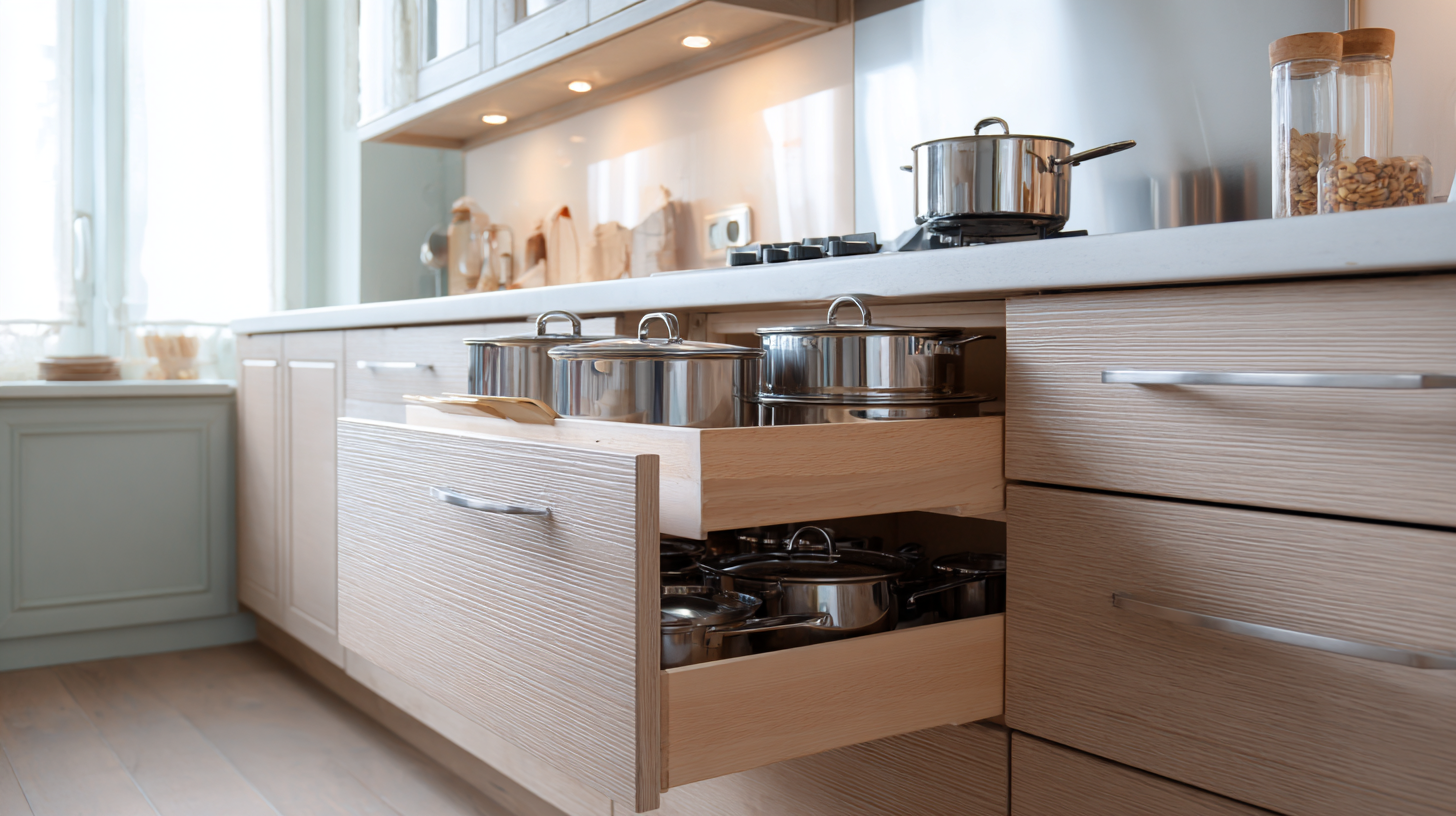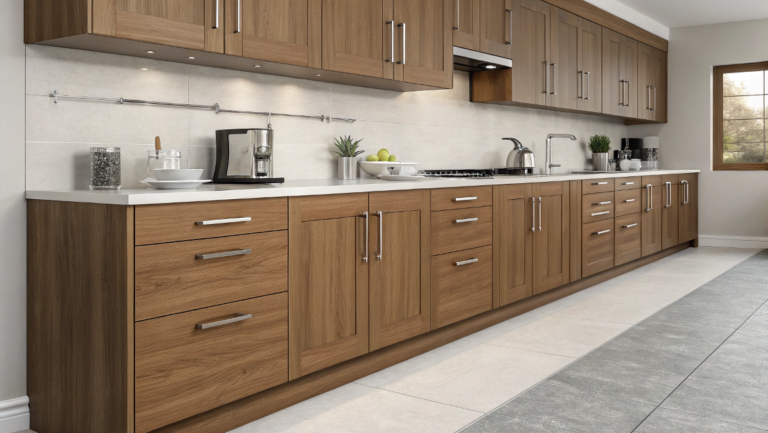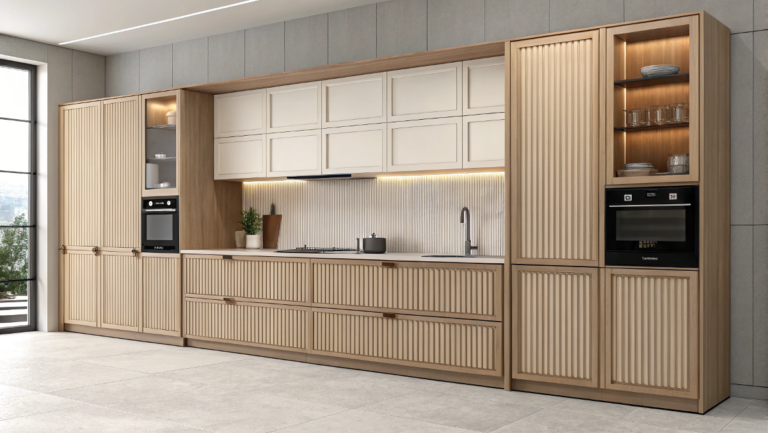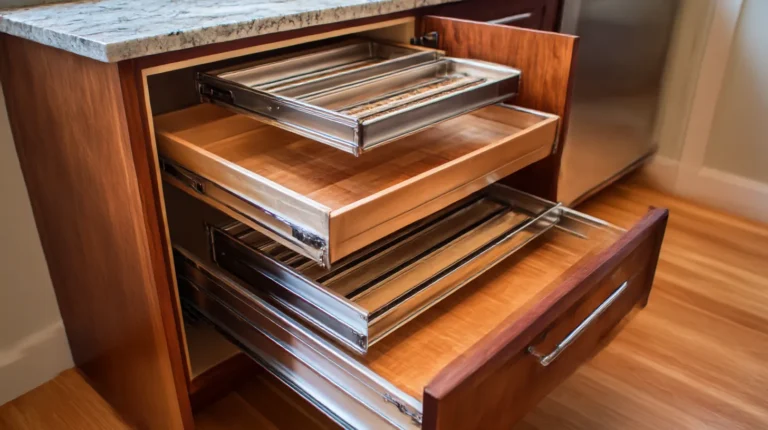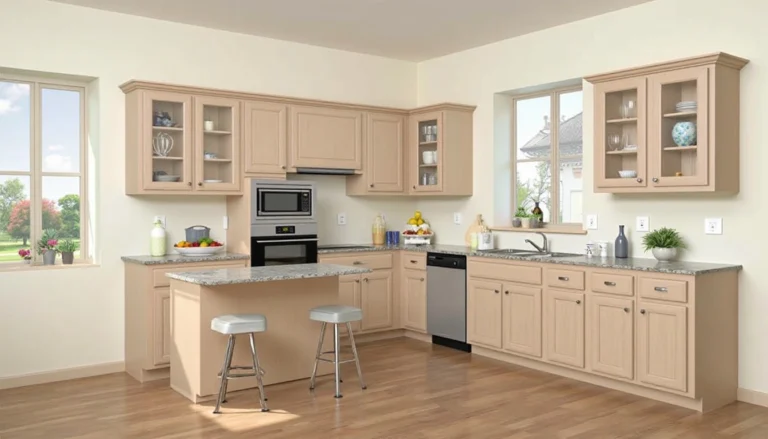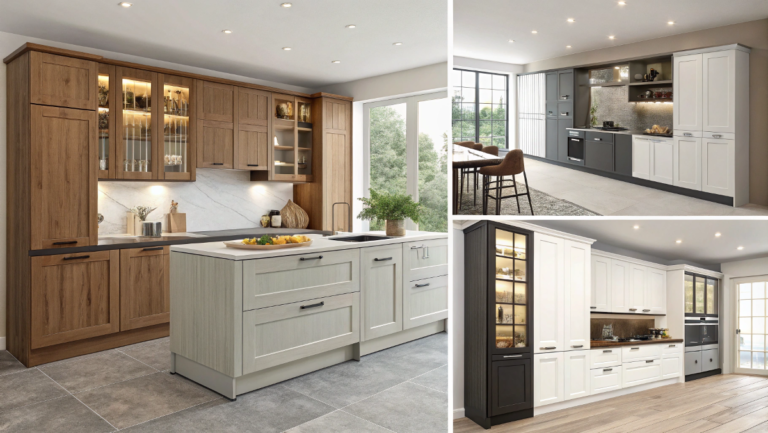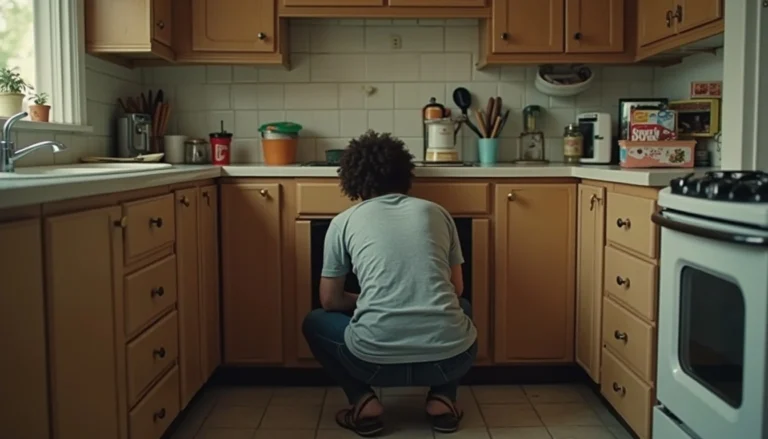How to Choose the Best Drawer Base Cabinet for Your Kitchen
True story, one Saturday morning, I was on my hands and knees, digging for a frying pan that had somehow migrated to the very back of my lower cabinet. My coffee went cold. My patience? Gone. That was the moment I promised myself: never again. A drawer base cabinet was going to fix this madness.
If you’ve ever played Kitchen Jeng, trying to grab the one pot you actually need, I feel you. Drawer base cabinets changed everything for me; no more mystery zones in the back of cupboards, no more bruised knees. They make your kitchen work smarter, not harder, and honestly, they just look better doing it.
In the next few minutes, we’ll break down exactly what a drawer base cabinet is, why it’s worth considering for your kitchen, and the sneaky mistake I made the first time I bought one. Yep, I learned the hard way so you don’t have to
What Is a Drawer Base Cabinet?
A drawer base cabinet is exactly what it sounds like, a lower kitchen cabinet built entirely or mostly of pull-out drawers instead of doors. Think of it as the upgrade from those deep, dark cabinets where everything gets lost behind the mixing bowls.
Here’s the simple breakdown.
-
Base height. Usually, around 34½ inches standard for kitchen counters
-
Depth. Around 24 inches, so it lines up perfectly with the countertops
-
Drawers. Typically, two to four stacked drawers, depending on the size
-
Widths. Most common sizes are 12, 15, 18, 24, 30, and 36
Each drawer glides out smoothly, meaning you can see and reach everything inside without playing a game of kitchen Twister. The bottom drawers usually hold heavier items like pots and small appliances, while the upper drawers are perfect for utensils, linens, and baking tools.
In plain English? A drawer base cabinet provides full visibility, easier access, and reduced clutter stress. Once you’ve had one, you’ll never go back to the old cabinet style again ask me how I know
Benefits of Choosing a Drawer Base Cabinet
Let’s be real, a drawer base cabinet isn’t just a design trend. It’s a total lifestyle upgrade for anyone who actually cooks (or pretends to on weeknights like me).
Easier Access, No More Kitchen Yoga
You know that move where you crouch, twist, and half-crawl into a dark cabinet to find your skillet? Yeah, that’s history. Drawer base cabinets pull out fully, so you can see everything, even that forgotten pan in the back. Your knees and back will thank you.
Smarter Organization
Each drawer can have its own zone.
-
Top drawer utensils, foil, and random gadgets that don’t fit anywhere else.
-
Middle drawer plates, bowls, or meal-prep containers.
-
Bottom drawer pots, pans, or that bulky crockpot you swore you’d use weekly.
Add a few drawer dividers, and suddenly your kitchen feels like a calm, organized Pinterest board minus the judgment
More Storage in Less Space
Because drawers use the full depth of the cabinet, you get more usable space than standard door-and-shelf designs. No weird gaps or unreachable corners. Just smooth-gliding, neatly stacked bliss.
Sleek, Modern Look
Drawer base cabinets give your kitchen clean lines and a custom, high-end feel, even on a mid-range budget. Pair them with matte black handles or soft-close slides, and your space looks professionally designed for a fraction of the cost.
Family-Friendly Function
If you’ve got kids, drawers make it easy for them to grab their own dishes or snack containers without climbing the counters. Ask me how I know, my six-year-old now “helps unload the dishwasher.
Key Specs and Design Details of Drawer Base Cabinets
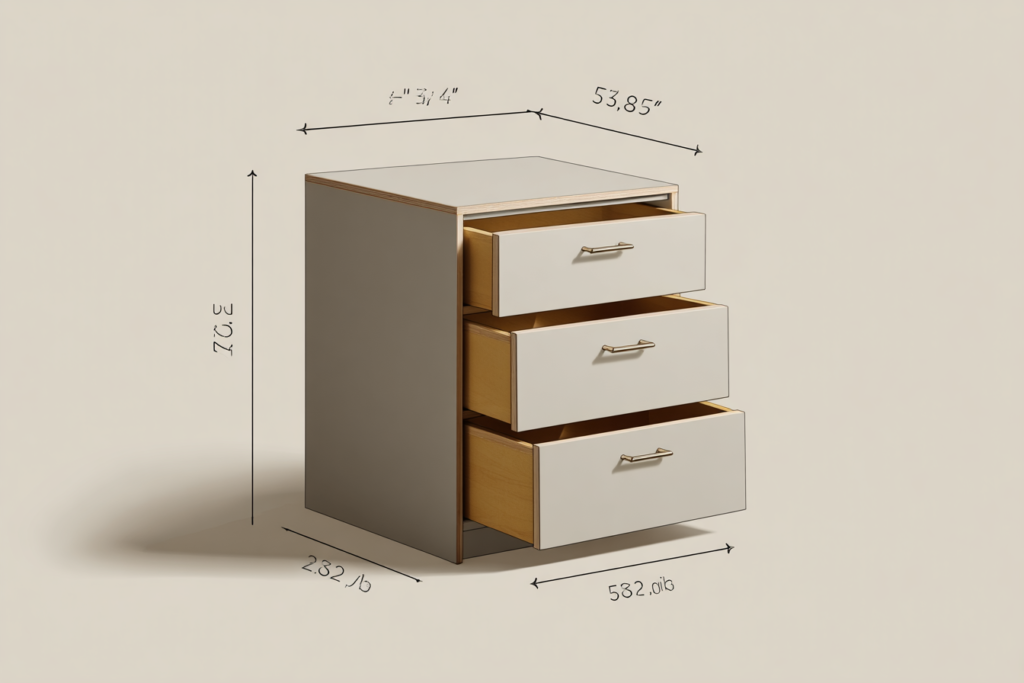
Before you fall in love with the idea (and trust me, you will), let’s talk details. A drawer base cabinet only works as beautifully as it’s built, and a few small specs make a huge difference once you start actually using it.
Size Basics Every Homeowner Should Know
Drawer base cabinets follow the same overall dimensions as regular lower cabinets, which means no complicated remodeling math.
-
Height. Around 34½ inches, that sweet spot for most countertops.
-
Depth. Usually 24 inches, though smaller kitchens sometimes use 21-inch versions.
-
Widths. Anywhere from 12 inches to 36 inches wide, depending on how much you want to store or how many cookie sheets you own.
If you’re swapping out an old cabinet, these sizes slide right into place, no major carpentry panic required.
The Secret Hero. Drawer Slides
The way a drawer moves tells you everything about its quality. A smooth glide feels like luxury, while a sticky one will test your patience daily.
-
Soft-close slides keep drawers from slamming shut, especially handy if you have kids or clumsy elbows
-
Full-extension slides let you see every inch of space, no mystery zones in the back.
-
Undermount slides hide the hardware and carry more weight, which makes the whole thing feel solid and clean.
I’ve learned the hard way: cheap slides might save money now, but you’ll regret it the first time your drawer jams with 12 pounds of pots.
How Much Weight Can It Handle?
Most homeowners don’t think about this until they overload a drawer. Standard models handle about 75 pounds, but if you plan to stash cast iron, mixers, or your secret snack stash, spring for heavy-duty glides that hold up to 150 pounds. Totally worth it.
Material and Finish Tips
Solid wood or sturdy plywood keeps everything feeling solid for years. MDF or particleboard can be okay for light use, but moisture and weight aren’t its friends. For finishes, pick something that wipes clean easily, enamel, laminate, or a tough paint finish, because life happens, and spaghetti sauce flies.
When to Use Drawer Base Cabinets in Your Kitchen Layout
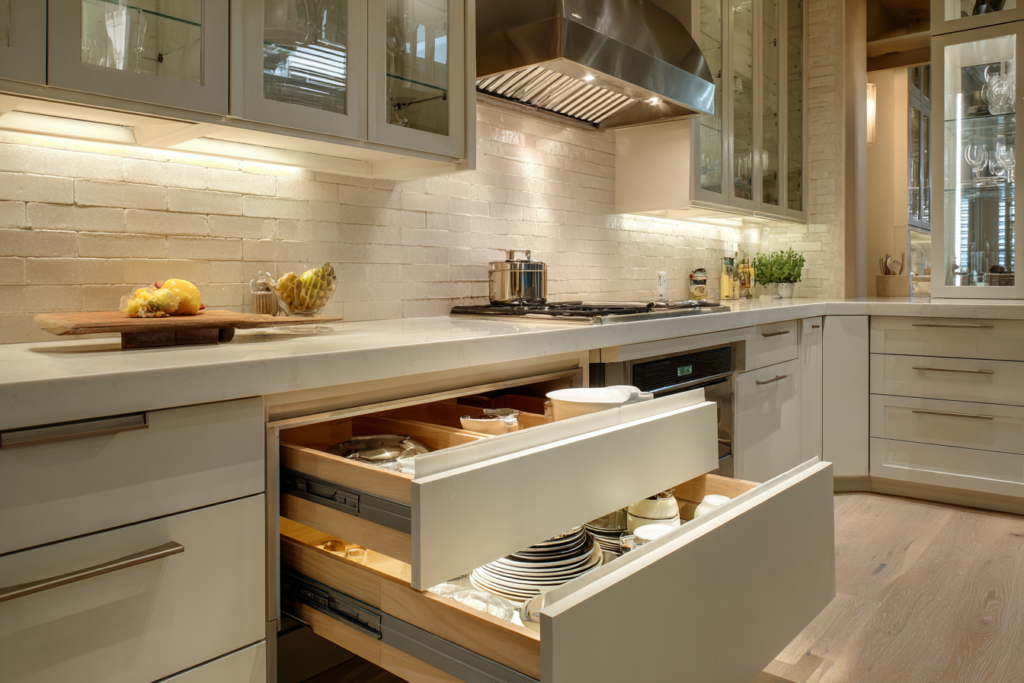
Not every cabinet needs drawers, but the right ones in the right places? Game changer. Drawer base cabinets shine in spots where you need easy access, daily efficiency, and zero digging around.
The Best Zones for Drawer Base Cabinets
If you’re designing or updating your kitchen, these are the prime spots to consider drawers instead of doors.
-
Under your main prep area, Perfect for knives, mixing bowls, and those baking gadgets you actually use.
-
Next to the stove, keep pans, lids, and utensils within arm’s reach. You’ll wonder how you ever cooked without it.
-
In a kitchen island, Ideal for storing dishes, towels, and even snacks. (My kids know exactly which drawer hides the granola bars.)
-
Near the dishwasher, it makes unloading way easier, just slide and stash.
Where You Might Skip Them
Not every spot needs drawers. If you’ve got a spot for your trash bin, cleaning supplies, or tall items like baking sheets, you’ll want to keep at least a few traditional door cabinets. The goal is balance. A mix of both gives you the best of form and function.
For Accessibility and Aging-in-Place
Drawer base cabinets are a huge win for homeowners who want a kitchen that stays comfortable as they age. No bending, no reaching, just smooth pull-out drawers that bring everything right to you.
Layout Tip from Experience
When I remodeled our kitchen, I tried to squeeze drawers everywhere. Turns out, too many drawers can make the layout feel cramped. Keep at least one large cabinet for tall storage, think baking sheets, cutting boards, or that awkward pasta pot that never fits anywhere else.
Cost and Budgeting Tips for Drawer Base Cabinets
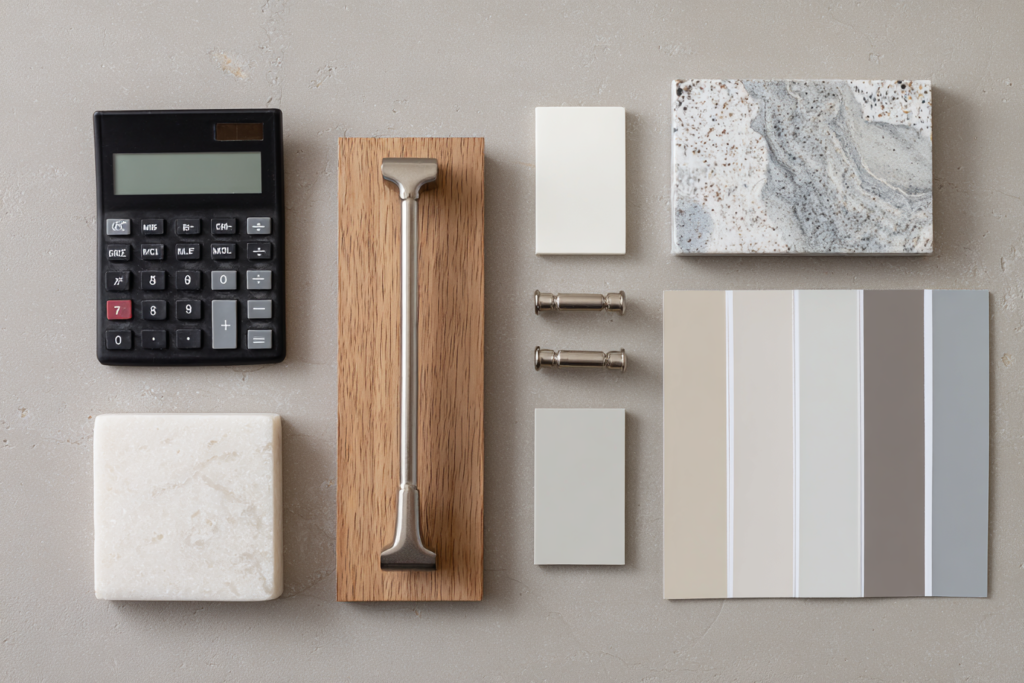
Let’s talk money, because even the dreamiest kitchen ideas have to meet real budgets. A drawer base cabinet usually costs a bit more than a standard cabinet with doors, but you’re paying for comfort, convenience, and less frustration every time you cook.
What You Can Expect to Spend
Prices vary a lot depending on how custom you go, but here’s the general neighborhood:
-
Stock options. $200-$450 for a 30-inch-wide unit. You’ll find these at big-box stores, easy to grab, ready to install.
-
Semi-custom. $450-$850, depending on finish and hardware. Great middle ground if you want soft-close drawers or a specific color.
-
Fully custom. $1,000 and up per cabinet. You get to pick wood type, drawer layout, and finish, perfect if you’re building your forever kitchen.
When I redid my kitchen, I mixed and matched, a few splurge drawers near the stove, and budget ones near the pantry. Nobody can tell the difference, but my wallet definitely can.
What Affects the Price
Here’s what tends to sneak up on your total:
-
Hardware. High-end glides and soft-close slides add $25-$75 per drawer.
-
Materials. Plywood boxes cost more but hold up longer than particleboard.
-
Finishes. Painted cabinets are pricier than stained ones (ask me how I found out).
-
Labor. Drawers take more precision to install than simple doors. Plan for extra time if you’re hiring help.
Ways to Stretch Your Budget
-
Shop sales or clearance events, last-season cabinet lines can be 30-50% off.
-
Upgrade only where it counts. Drawers near your prep area deserve soft-close; others can stay basic.
-
Paint it yourself. A $45 quart of cabinet enamel can make stock pieces look high-end.
-
Mix styles. Balance a few drawer bases with classic door cabinets to stay stylish and affordable.
Why It’s Still Worth It
Drawer base cabinets add daily comfort and long-term value. Every time you pull out a drawer instead of crouching for a pan, you’ll remember it was money well spent.
Installation, Maintenance, and Longevity of Drawer Base Cabinets
Installing a drawer base cabinet isn’t rocket science, but it’s definitely one of those “measure twice, drill once situations. Whether you’re going the DIY route or calling in backup, a little prep work can save a lot of frustration. Ask me how I know I once drilled a pilot hole right through my brand-new drawer front. Ouch.
Installation Basics
Here’s what to keep in mind before you start.
-
Level everything first. Uneven floors can make drawers slide crookedly or stick halfway open. Shim those base corners before tightening screws.
-
Check alignment as you go. Once a drawer box goes in wrong, it throws off every slide above it.
-
Install slides carefully. Follow the manufacturer’s guide, even if you think you know better.
-
Handle spacing matters. Test handle placement with painter’s tape before drilling holes, trust me, it’s worth the extra 5 minutes.
If DIY isn’t your thing, hiring a carpenter or kitchen installer usually runs about $50–$100 per cabinet, depending on complexity. It’s money well spent for perfect alignment and smooth-gliding drawers.
Keeping Your Drawer Base Cabinet in Shape
Maintenance is simple, but a few small habits go a long way:
-
Wipe inside drawers monthly to keep crumbs and grease from building up.
-
Tighten screws and handles every few months. Hardware naturally loosens with use.
-
Lubricate drawer slides once a year with silicone spray if they start to squeak or drag.
-
Keep water spills away from drawer edges and seams. Moisture is wood’s worst enemy.
Longevity Tips
A well-built drawer base cabinet can last 20+ years if treated right.
Choose sturdy materials, avoid overloading drawers, and don’t yank them open like you’re late for a meeting. Guilty. If you’re painting or refinishing, use a cabinet-grade enamel for maximum durability. It’ll resist chipping and sticky fingerprints from little helpers
Design Inspiration and Real-Life Examples of Drawer Base Cabinets
Here’s the fun part. dreaming up how a drawer base cabinet can totally transform your kitchen. Whether you’re into rustic charm or clean modern lines, there’s a version that fits your space and your personality.
Modern and Minimalist
If you love the clean, uncluttered look, opt for flat-panel drawer fronts in white, charcoal, or a pale gray. Add matte black or brushed brass handles, and boom. instant sophistication. Pairing drawers under your countertop keeps the visual lines smooth and uninterrupted.
I tried this look in my own kitchen using a Shale Gray paint from Behr, it cost about $42 for a gallon, and it still looks flawless after two years of sticky fingers and spaghetti night.
Warm and Rustic
For farmhouse or cottage vibes, choose shaker-style drawer fronts in natural wood tones or creamy off-white. Soft-close hardware keeps things modern, while the texture of wood keeps it cozy. Bonus points if you add woven baskets in open drawers for easy-access storage.
My neighbor Linda did this in her 1950s kitchen using pine drawer bases with antique-style pulls. The space looks like a Pinterest board come to life, but she spent under $300 on materials.
Small Kitchen Magic
Even a tiny kitchen benefits from a few drawers. Try a 30-inch-wide drawer base cabinet next to your stove to hold utensils and pans. It keeps clutter off the counter and makes the space feel more open.
If you’re working with an older kitchen layout, swap one lower cabinet for drawers. It’s a subtle change that makes a huge difference. And you’ll wonder how you ever lived without them.
Mix and Match for Personality
You don’t have to commit to all drawers everywhere. Try mixing drawer bases with classic door cabinets for balance. drawers under counters, doors for tall storage. It creates visual variety while keeping costs under control.
Drawer Base Cabinet Checklist and Decision Guide
Before you hit, add to cart, take five minutes with this checklist. It’ll save you from the classic drawer regrets. crooked slides, wasted space, and “why didn’t I measure that?” moments.
Quick Prep Checklist
Measure twice, seriously.
Grab your tape measure and jot down
-
Width of the cabinet space
-
Counter height should be around 34½”
-
Depth usually 24
Plan your zones.
Ask yourself:
-
What do I need easy access to every day?
-
Which drawers will hold heavy stuff like pots and pans?
-
Where can I combine drawers and doors for balance?
Budget smart.
Estimate your cost range:
-
Stock cabinet. $200/$450
-
Semi-custom. $450/$850
-
Custom. $1,000+
Add a little wiggle room. There’s always a last-minute Home Depot run or three
Check your slides.
Don’t settle for sticky motion. Make sure you get.
-
Soft-close glides
-
Full-extension slides
-
Rated at least 75 lbs. 150 lbs. if you love cast iron like I do
Style it up.
Think finish and hardware combos:
-
White + matte black = modern classic
-
Navy + brass = bold and warm
-
Natural wood + black = cozy farmhouse
Ask Yourself Before Buying
-
Do I have enough clearance to pull drawers fully open?
-
Am I mixing drawer and door bases for visual balance?
-
Is the material durable enough for daily use?
-
Will the finish hold up to water, grease, and kid fingerprints?
Print this list, tape it to your fridge, and you’ll shop like a pro without actually being one
FAQs About Drawer Base Cabinets
What’s the difference between a drawer base cabinet and a regular base cabinet?
A drawer base cabinet is built with stacked pull-out drawers instead of a single door with shelves. It gives you full visibility and easy access no more crouching to find the one pot you actually need.
Are drawer base cabinets more expensive?
Usually, yes, but not by much. You’ll pay about 15/25% more than a traditional base cabinet. Still, the convenience and lack of daily frustration) makes it worth the extra dollars.
Can I replace a regular cabinet with a drawer base cabinet?
Absolutely. Most drawer base cabinets fit the same standard sizes, 24 inches deep and 34½ inches tall. You just need to make sure your countertop can lift slightly during installation or that you’ve got enough clearance for the drawers to open fully.
How long do drawer base cabinets last?
A well-built one can easily last 20 years or more. The key is solid materials, quality drawer slides, and gentle use, no slamming, even when dinner’s late.
Are drawer base cabinets good for small kitchens?
Yes! In fact, they’re ideal because drawers make every inch usable. One 30-inch-wide unit can store your everyday cookware and save tons of space that shelves usually waste.
Can I install them myself?
If you’ve got basic DIY skills and patience, yes. You’ll just need a level, shims, a drill, and a sense of humor. I once installed mine slightly crooked and didn’t notice until I opened the fridge door. Lesson learned.
What kind of hardware works best?
Soft-close slides and full-extension glides are non-negotiable if you want that “smooth luxury” feel. As for handles, go with sturdy pulls instead of tiny knobs. Drawers need extra grip power.
Final Thoughts. One Drawer Base Cabinet at a Time
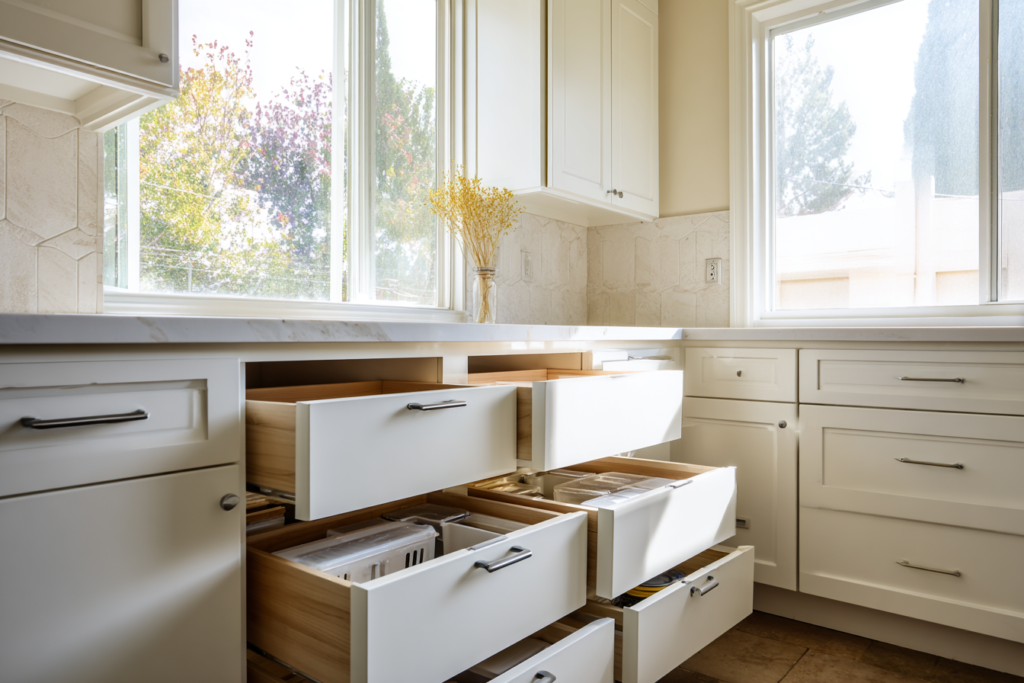
If there’s one thing I’ve learned after a few too many late-night DIY projects, it’s this: your kitchen should work for you, not against you. A drawer base cabinet might seem like a small upgrade, but it’s the kind that changes your daily rhythm, no bending, no digging, no where did I put that lid panic at 6 p.m.
You don’t need to replace every cabinet in your kitchen. Start small. Swap just one lower cabinet for drawers and live with it for a while. You’ll see how easy it is to stay organized, and how nice it feels to have a kitchen that listens.
I still remember the first time I opened my new drawer base. It slid out like butter, every pan neatly lined up, no backaches in sight. I swear I heard angels sing.
So if your kitchen’s been driving you a little nuts lately, take it from someone who’s been there: one drawer base cabinet can make all the difference. And who knows? It might just be the start of your next big kitchen love story

